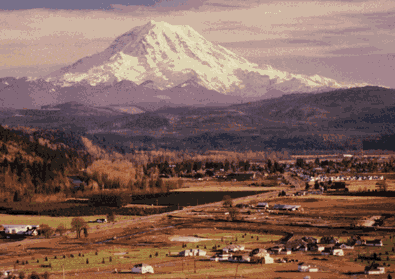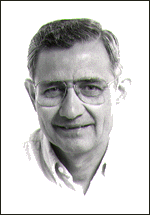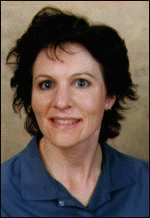Endnotes
- Page ID
- 208
\( \newcommand{\vecs}[1]{\overset { \scriptstyle \rightharpoonup} {\mathbf{#1}} } \)
\( \newcommand{\vecd}[1]{\overset{-\!-\!\rightharpoonup}{\vphantom{a}\smash {#1}}} \)
\( \newcommand{\dsum}{\displaystyle\sum\limits} \)
\( \newcommand{\dint}{\displaystyle\int\limits} \)
\( \newcommand{\dlim}{\displaystyle\lim\limits} \)
\( \newcommand{\id}{\mathrm{id}}\) \( \newcommand{\Span}{\mathrm{span}}\)
( \newcommand{\kernel}{\mathrm{null}\,}\) \( \newcommand{\range}{\mathrm{range}\,}\)
\( \newcommand{\RealPart}{\mathrm{Re}}\) \( \newcommand{\ImaginaryPart}{\mathrm{Im}}\)
\( \newcommand{\Argument}{\mathrm{Arg}}\) \( \newcommand{\norm}[1]{\| #1 \|}\)
\( \newcommand{\inner}[2]{\langle #1, #2 \rangle}\)
\( \newcommand{\Span}{\mathrm{span}}\)
\( \newcommand{\id}{\mathrm{id}}\)
\( \newcommand{\Span}{\mathrm{span}}\)
\( \newcommand{\kernel}{\mathrm{null}\,}\)
\( \newcommand{\range}{\mathrm{range}\,}\)
\( \newcommand{\RealPart}{\mathrm{Re}}\)
\( \newcommand{\ImaginaryPart}{\mathrm{Im}}\)
\( \newcommand{\Argument}{\mathrm{Arg}}\)
\( \newcommand{\norm}[1]{\| #1 \|}\)
\( \newcommand{\inner}[2]{\langle #1, #2 \rangle}\)
\( \newcommand{\Span}{\mathrm{span}}\) \( \newcommand{\AA}{\unicode[.8,0]{x212B}}\)
\( \newcommand{\vectorA}[1]{\vec{#1}} % arrow\)
\( \newcommand{\vectorAt}[1]{\vec{\text{#1}}} % arrow\)
\( \newcommand{\vectorB}[1]{\overset { \scriptstyle \rightharpoonup} {\mathbf{#1}} } \)
\( \newcommand{\vectorC}[1]{\textbf{#1}} \)
\( \newcommand{\vectorD}[1]{\overrightarrow{#1}} \)
\( \newcommand{\vectorDt}[1]{\overrightarrow{\text{#1}}} \)
\( \newcommand{\vectE}[1]{\overset{-\!-\!\rightharpoonup}{\vphantom{a}\smash{\mathbf {#1}}}} \)
\( \newcommand{\vecs}[1]{\overset { \scriptstyle \rightharpoonup} {\mathbf{#1}} } \)
\( \newcommand{\vecd}[1]{\overset{-\!-\!\rightharpoonup}{\vphantom{a}\smash {#1}}} \)
\(\newcommand{\avec}{\mathbf a}\) \(\newcommand{\bvec}{\mathbf b}\) \(\newcommand{\cvec}{\mathbf c}\) \(\newcommand{\dvec}{\mathbf d}\) \(\newcommand{\dtil}{\widetilde{\mathbf d}}\) \(\newcommand{\evec}{\mathbf e}\) \(\newcommand{\fvec}{\mathbf f}\) \(\newcommand{\nvec}{\mathbf n}\) \(\newcommand{\pvec}{\mathbf p}\) \(\newcommand{\qvec}{\mathbf q}\) \(\newcommand{\svec}{\mathbf s}\) \(\newcommand{\tvec}{\mathbf t}\) \(\newcommand{\uvec}{\mathbf u}\) \(\newcommand{\vvec}{\mathbf v}\) \(\newcommand{\wvec}{\mathbf w}\) \(\newcommand{\xvec}{\mathbf x}\) \(\newcommand{\yvec}{\mathbf y}\) \(\newcommand{\zvec}{\mathbf z}\) \(\newcommand{\rvec}{\mathbf r}\) \(\newcommand{\mvec}{\mathbf m}\) \(\newcommand{\zerovec}{\mathbf 0}\) \(\newcommand{\onevec}{\mathbf 1}\) \(\newcommand{\real}{\mathbb R}\) \(\newcommand{\twovec}[2]{\left[\begin{array}{r}#1 \\ #2 \end{array}\right]}\) \(\newcommand{\ctwovec}[2]{\left[\begin{array}{c}#1 \\ #2 \end{array}\right]}\) \(\newcommand{\threevec}[3]{\left[\begin{array}{r}#1 \\ #2 \\ #3 \end{array}\right]}\) \(\newcommand{\cthreevec}[3]{\left[\begin{array}{c}#1 \\ #2 \\ #3 \end{array}\right]}\) \(\newcommand{\fourvec}[4]{\left[\begin{array}{r}#1 \\ #2 \\ #3 \\ #4 \end{array}\right]}\) \(\newcommand{\cfourvec}[4]{\left[\begin{array}{c}#1 \\ #2 \\ #3 \\ #4 \end{array}\right]}\) \(\newcommand{\fivevec}[5]{\left[\begin{array}{r}#1 \\ #2 \\ #3 \\ #4 \\ #5 \\ \end{array}\right]}\) \(\newcommand{\cfivevec}[5]{\left[\begin{array}{c}#1 \\ #2 \\ #3 \\ #4 \\ #5 \\ \end{array}\right]}\) \(\newcommand{\mattwo}[4]{\left[\begin{array}{rr}#1 \amp #2 \\ #3 \amp #4 \\ \end{array}\right]}\) \(\newcommand{\laspan}[1]{\text{Span}\{#1\}}\) \(\newcommand{\bcal}{\cal B}\) \(\newcommand{\ccal}{\cal C}\) \(\newcommand{\scal}{\cal S}\) \(\newcommand{\wcal}{\cal W}\) \(\newcommand{\ecal}{\cal E}\) \(\newcommand{\coords}[2]{\left\{#1\right\}_{#2}}\) \(\newcommand{\gray}[1]{\color{gray}{#1}}\) \(\newcommand{\lgray}[1]{\color{lightgray}{#1}}\) \(\newcommand{\rank}{\operatorname{rank}}\) \(\newcommand{\row}{\text{Row}}\) \(\newcommand{\col}{\text{Col}}\) \(\renewcommand{\row}{\text{Row}}\) \(\newcommand{\nul}{\text{Nul}}\) \(\newcommand{\var}{\text{Var}}\) \(\newcommand{\corr}{\text{corr}}\) \(\newcommand{\len}[1]{\left|#1\right|}\) \(\newcommand{\bbar}{\overline{\bvec}}\) \(\newcommand{\bhat}{\widehat{\bvec}}\) \(\newcommand{\bperp}{\bvec^\perp}\) \(\newcommand{\xhat}{\widehat{\xvec}}\) \(\newcommand{\vhat}{\widehat{\vvec}}\) \(\newcommand{\uhat}{\widehat{\uvec}}\) \(\newcommand{\what}{\widehat{\wvec}}\) \(\newcommand{\Sighat}{\widehat{\Sigma}}\) \(\newcommand{\lt}{<}\) \(\newcommand{\gt}{>}\) \(\newcommand{\amp}{&}\) \(\definecolor{fillinmathshade}{gray}{0.9}\)
Snow-clad Mt. Rainier, a 4,392 m-high volcano built by plate-tectonic processes, dominates the pastoral scene around Orting, Washington. This valley is an inviting place for people to live, work, and play, but it is also highly vulnerable to destructive mudflows that could be generated by renewed eruptive activity at Mt. Rainier. Society must learn to "co-exist" intelligently with active volcanoes. (Photograph by David E. Wieprecht, USGS.)
About the authors
W. Jacquelyne Kious
Jackie Kious is a San Francisco Bay Area native. She has always had an interest in writing, having started as a Journalism Major at Skyline College. She was then accepted into the Special Major program at San Francisco State University. This program allowed her to design her own major combining her interest in the earth and biological sciences with writing. Since receiving her BS degree in Science Writing from San Francisco State University, Jackie has written articles on subjects ranging from DNA Fingerprinting and the Human Genome Project to biodiversity in the rain forests and meteorology.
In 1991, she attended an open house at the U.S. Geological Survey (USGS) western regional headquarters in Menlo Park, where she discovered the Volunteer For Science program. She signed up to volunteer her time and was referred to the Geologic Division, which had wanted to produce a general interest publication on plate tectonics for some time. After modifying a pre-existing rough outline, she teamed up with Volcanologist Bob Tilling to begin writing This Dynamic Earth in January of 1992.
Jackie is an Administrative Assistant with the South San Francisco Fire Department. In addition to her volunteer work with the USGS, she is currently writing a history of the South San Francisco Fire Department and assists with fundraising events for Ronald McDonald House and is a citizen volunteer with a local police department.

Robert I. Tilling
Born in Shanghai, China, Bob Tilling grew up in southern California (near San Diego). He received his BA from Pomona College, and a Ph.D. in geology from Yale University, before joining the U.S. Geological Survey (USGS) in 1962. Dr. Tilling has worked as a volcanologist for nearly 25 years, beginning with his assignment in 1972 to the USGS' Hawaiian Volcano Observatory (HVO), becoming its Scientist-in-Charge in 1975. He later served (1976-81) as the Chief of the Office of Geochemistry and Geophysics, at USGS' headquarters in Reston, Virginia, and was in charge of the USGS studies before, during, and after the 18 May 1980 catastrophic eruption of Mount St. Helens. Thus, Bob is no stranger to hazardous impacts of plate tectonics.
Since "rotating back" to a research position in 1982, Dr. Tilling resumed his studies of eruptive phenomena and associated hazards in the U.S. and abroad. He has written many articles -- technical and general-interest-- and has served as an invited consultant to a number of foreign countries (e.g., Colombia, Ecuador, Iceland, Indonesia, and Mexico). In February 1996, Bob agreed once again to accept a management position: Chief Scientist of the USGS Volcano Hazards Team, which is responsible for monitoring the active volcanoes in the U.S. and assessing their potential hazards. In October 1999, he again "rotated back" to a research position.
Since 1987, Bob has worked at the USGS' western regional center in Menlo Park, California; he resides with his wife, Susan, in the foothills of the nearby Santa Cruz Mountains. They have two grown daughters, Bobbi and Karen, both living in the San Francisco Bay Area, and one grandson (Peter). When not studying volcanoes, Bob enjoys sculpting, hiking, playing racquetball, listening to music (classical and country), and tasting of fine wines.
Further reading
These works listed furnish additional information on topics not covered, or only briefly discussed, in the booklet.
Attenborough, David, 1986, The Living Planet: British Broadcasting Corporation, 320 p. (An informative, narrative version of the highly successful television series about how the Earth works.)
Coch, N.K., and Ludman, Allan, 1991, Physical Geology: Macmillan Publishing Company, New York, 678 p. (Well-illustrated college textbook that contains excellent chapters on topics related to Earth dynamics and plate tectonics.)
Cone, Joseph, 1991, Fire Under the Sea: William Morrow and Company, Inc., New York, 285 p. (paperback). (A readable summary of oceanographic exploration and the discovery of volcanic hot springs on the ocean floor.)
Decker, Robert, and Decker, Barbara, 1989, Volcanoes: W.H. Freeman and Company, New York, 285 p. (paperback). (An excellent introduction to the study of volcanoes written in an easy-to-read style.)
Duffield, W.A., Sass, J.H., and Sorey, M.L., 1994, Tapping the Earth's Natural Heat: U.S. Geological Survey Circular 1125, 63 p. (A full-color book that describes, in non-technical terms, USGS studies of geothermal resources-one of the benefits of plate tectonics-as a sustainable and relatively nonpolluting energy source.)
Ernst, W.G., 1990, The Dynamic Planet: Columbia University Press, New York, 280 p. (A comprehensive college-level textbook that includes good chapters on plate tectonics and related topics.)
Heliker, Christina, 1990, Volcanic and seismic hazards of the Island of Hawaii: U.S. Geological Survey general-interest publication, 48 p. (A full-color booklet summarizing the volcanic, seismic, and tsunami hazards.)
Krafft, Maurice, 1993, Volcanoes: Fire from the Earth: Harry N. Abrams, New York, 207 p. (paperback). (A well-illustrated, non-technical primer on volcanoes; Maurice Krafft and his wife Katia were the world's foremost photographers of volcanoes before they were killed during the June 1991 eruption of Unzen Volcano, Japan.)
Lindh, A.G., 1990, Earthquake prediction comes of age: Technology Review, Feb/March, p. 42-51. (A good introduction to the basis and techniques used by scientists in attempting to predict earthquakes.)
McNutt, Steve, 1990, Loma Prieta earthquake, October 17, 1989: An overview: California Geology, v. 43, no. 1, p. 3-7. (Along with the companion article by D.D. Montgomery, gives the essential information about this destructive earthquake along the San Andreas Fault.)
McPhee, John, 1993, Assembling California: Farrar, Straus, & Giroux, New York, 303 p. (A fascinating account of the role of plate tectonics in the geology of California, told in the typical McPhee style of conversations with scientists.)
Montgomery, D.D., 1990, Effects of the Loma Prieta earthquake, October 17, 1989: California Geology, v. 43, no. 1, p. 8-13. (Along with the companion article by Steve McNutt, gives the essential information about this destructive earthquake along the San Andreas Fault.)
Ritchie, David, 1981, The Ring of Fire: New American Library, New York, 204 p. (paperback). (A popularized account of earthquakes, volcanoes, and tsunamis that frequently strike the circum-Pacific regions.)
Schulz, S.S., and Wallace, R.E., 1989, The San Andreas Fault: U.S. Geological Survey general-interest publication, 16 p. (This little booklet provides the basic information about the San Andreas Fault Zone, including a good discussion of earthquakes that occur frequently along it.)
Simkin, Tom, Unger, J.D., Tilling, R.I., Vogt, P.R., and Spall, Henry, compilers, 1994, This Dynamic Planet: World map of volcanoes, earthquakes, impact craters and plate tectonics: 1 sheet, U.S. Geological Survey (USGS). (In addition to the map's visually obvious physiographic features that relate to plate tectonics, the explanatory text gives a concise summary of how plate tectonics work.)
Sullivan, Water, 1991, Continents in Motion: McGraw-Hill Book Co., New York, 430 p. (A comprehensive review of the developments that culminated in the plate tectonics theory. Science Editor of the New York Times, Sullivan is widely regarded as the "dean" of America's science writers.)
Tarbuck, Edward, and Lutgens, Frederick, 1985, Earth Science: Charles E. Merrill Publishing Co., Columbus, Ohio, 561 p. (A college-level geology textbook that contains good chapters on plate tectonics and related topics.)
Tilling, R.I., 1991, Born of fire: Volcanoes and igneous rocks: Enslow Publishers, Inc., Hillside, New Jersey, 64 p. (An introductory text about the kinds of volcanoes and their products and hazardous impacts-aimed at approximately junior high- to high-school level.)
Tilling, R.I., Heliker, C., and Wright, T.L., 1987, Eruptions of Hawaiian Volcanoes: Past, present, and future: U.S. Geological Survey general-interest publication, 54 p. (A nontechnical summary, illustrated by many color photographs, of the abundant data on Hawaiian volcanism; similar in format to this book.)
Tilling, R.I., Topinka, Lyn, and Swanson, D.A., 1990, Eruptions of Mount St. Helens: Past, present, and future: U.S. Geological Survey general-interest publication, 56 p. (A nontechnical summary, illustrated by many color photographs and diagrams, of the abundant scientific data available for the volcano, with emphasis on the catastrophic eruption of 18 May 1980; similar in format to this book.)
Time-Life Books Inc., 1982, Volcano: 1983, Continents in Collision, in Planet Earth Series: Alexandria, Virginia, Time-Life Books, 176 p. each. (Informative and general surveys of volcanism and plate tectonics.)
Wright, T.L., and Pierson, T.C., 1992, Living with volcanoes: U.S. Geological Survey Circular 1073, 57 p. (A non-technical summary of the USGS' Volcano Hazards Program, highlighting the scientific studies used in forecasting eruptions and assessing volcanic hazards, in the United States and abroad.)
This publication is one of a series of general interest publications prepared by the U.S. Geological Survey to provide information about the earth sciences, natural resources, and the environment. To obtain a catalog of additional titles in the series "General Interest Publications of the U.S. Geological Survey," write:
U.S. Geological Survey
Branch of Information Services
P.O. Box 25286
Denver, CO 80225
The paper version of this book can be ordered directly from the U.S. Geological Survey:
USGS Information Services
Box 25286, Building 810
Denver Federal Center
Denver, CO 80225
303-202-4700; Fax 303-202-4693
Or call toll-free 1-888-ASK-USGS
Visit the U.S. Geological Survey Earth Science Information Centers
As the Nation's principal conservation agency, the Department of the Interior has responsibility for most of our nationally owned public lands and natural and cultural resources. This includes fostering sound use of our land and water resources; protecting our fish, wildlife, and biological diversity; preserving the environmental and cultural values of our national parks and historical places; and providing for the enjoyment of life through outdoor recreation. The Department assesses our energy and mineral resources and works to ensure that their development is in the best interests of all our people by encouraging stewardship and citizen participation in their care. The Department also has a major responsibility for American Indian reservation communities and for people who live in island territories under U.S. administration.
Contributors and Attributions
W. Jacquelyne Kious and Robert Tilling ("The Dynamic Earth" via the U.S. Geological Survey)



